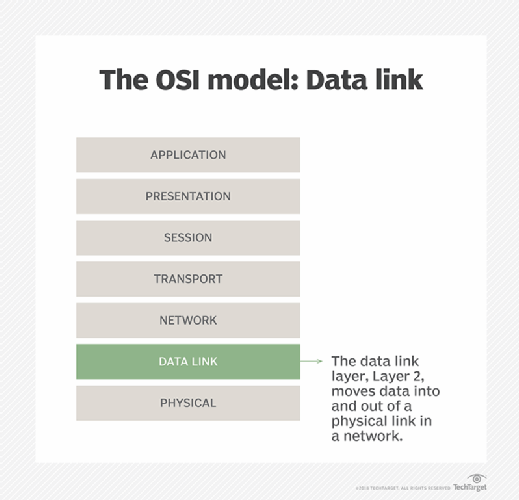frame relay
What is frame relay?
Frame relay is a packet-switching telecommunications service designed for cost-efficient data transmission for intermittent traffic between local area networks (LANs) and between endpoints in wide area networks (WANs).
The service was once widely available and implemented. Today, major internet service providers (ISPs) have stopped using it. Sprint, now part of T-Mobile, ended its frame relay service in 2007. Verizon stopped offering it to new customers in 2009 and completely phased it out in 2013. AT&T stopped offering it in 2012 but supported existing customers until 2016.
Frame relay puts data in a variable-size unit called a frame and leaves any necessary error correction, or retransmission of data, up to the endpoints. This approach speeds up data transmission.
For most services, the network provides a permanent virtual circuit (PVC). That means the customer sees a continuous, dedicated connection without paying for a full-time leased line. The service provider figures out how to route each frame to its destination and charges based on usage. By contrast, switched virtual circuits (SVC) are temporary connections that are destroyed after a specific data transfer is completed.
The customer selects a level of service quality, prioritizing some frames and making others less important. A number of service providers offered frame relay on fractional T-1 or full T-carrier systems. Frame relay provided a midrange service between Integrated Services Digital Network (ISDN) technology and asynchronous transfer mode (ATM). ISDN offers bandwidth at 128 kilobits per second (Kbps), and ATM operates at speeds of 155.520 megabits per second or 622.080 Mbps.
How does frame relay work?
For a frame relay WAN to send data, data terminal equipment (DTE) and data circuit-terminating equipment (DCE) are required. DTEs are typically located on the customer's premises and can include terminals, routers, bridges and personal computers. Carriers manager DCEs, providing switching and other services.
Frame relay is based on older X.25 packet-switching technology that was designed for sending analog data such as voice conversations. But, unlike X.25, frame relay is a fast packet technology. That means the protocol does not attempt to correct errors. When an error is detected in a frame, it is simply dropped. The endpoints are responsible for detecting and retransmitting dropped frames. The error incidence in digital networks is small relative to analog networks.
Frame relay is often used to connect LANs with major backbones. It is also used on public WANs and in private network environments with leased T-1 lines. It needs a dedicated connection during transmission and is not ideal for voice or video, which need a steady flow of transmissions.
Frame relay sends packets at the data link layer of the Open Systems Interconnection (OSI) model, rather than at the network layer. A frame can incorporate packets from different protocols such as Ethernet and X.25. It is variable in size and can be as large as a thousand bytes or more.

What are the benefits of frame relay?
The benefits of frame relay include the following:
- Efficient. It does not perform error correction, which consumes time and network resources. Its use of use variable packet sizes improves bandwidth use.
- Cost-effective. It's cheaper than dedicated lines and less hardware is required.
- Flexible. It uses a data link connection identifier (DLCI) number. The DLCI is a number that identifies the logical circuit between the router and the frame relay switch. It determines which circuit to send a frame to in a frame relay network, allowing any two stations to connect. Frame relay flexibility also comes from its ability to buffer traffic bursts.
- Low latency. It's less prone to latency because other network components handle error correction.
What are the issues with frame relay?
Frame relay was, at one time, a popular protocol for telecommunications companies to transmit long-distance voice traffic. It became less popular as telecommunications companies adopted Internet Protocol-based technologies for this task. Multiprotocol label switching has replaced frame relay in many places.
Some common network problems with frame relay include the following:
- link going down;
- inability to ping the remote router; and
- unable to ping end to end.
Those issues could be the result of a problem with the serial interfaces, the status of PVCs or an incorrectly assigned or deleted DLCI.
Permanent and switched virtual circuits
Frame relay uses temporary virtual circuits to send packets over the network through frame relay switches instead of sending them directly over the network's physical interfaces. ISPs guarantee a certain level of bandwidth for a virtual circuit working under normal conditions. The rate is called the committed information rate.
Permanent and switched virtual circuits are the two possible frame relay connection types. PVC is for connections that must be maintained for long periods, even if data is not being transferred. SVC is for temporary connections that only last for a single session. SVCs are established on a session-by-session basis and PVCs are established in advance.
PVCs provide a preestablished level of service, which makes them more reliable. SVCs can be cheaper, because they use whatever network resources are available.
Frame relay vs. ATM: What is the difference?
The main difference between asynchronous transmission mode and frame relay is that ATM provides error correction, management and packet flow management. Frame relay does not perform any of those tasks.
Frame relay and ATM also have different data rates. Frame relay circuits have a data rate of between 64 Kbps and 45 Mbps. ATM has a data rate of between 155 and 622 Mbps, depending on the media being used.
ATM has a quantifiable quality of service, whereas frame relay does not. Frame relay is generally less expensive than ATM.
A frame relay network also has a variable packet size, whereas ATM has a fixed packet size. Because of this variability, frame relay often has a higher packet delay, and lower reliability and packet speed transfer.
Frame relay's legacy
Although frame relay is no longer widely used, some older networks do still use the technology. It also still has value as a foundation for learning more complex or newer networking concepts. Until recently, the technology was covered on the Cisco Certified Network Associate (CCNA) exam. CCNA is an entry-level networking certification.
Learn more about the networking fundamentals covered on the CCNA exam with this guide.







